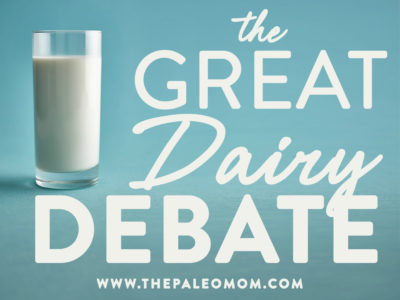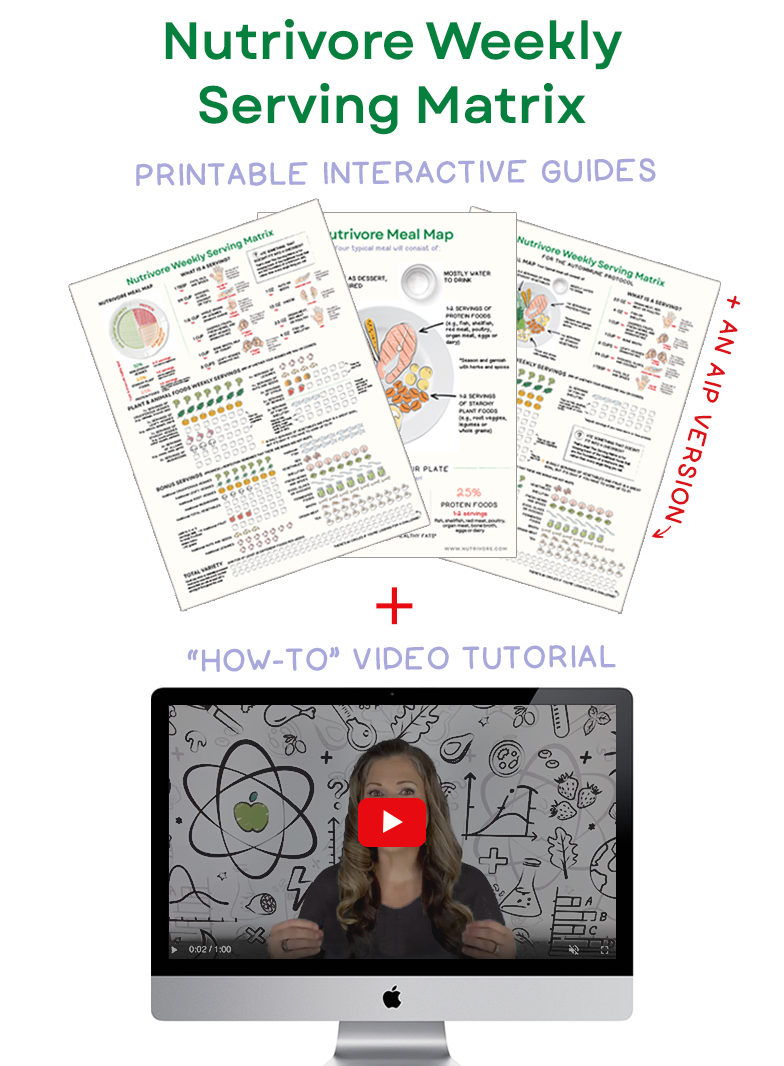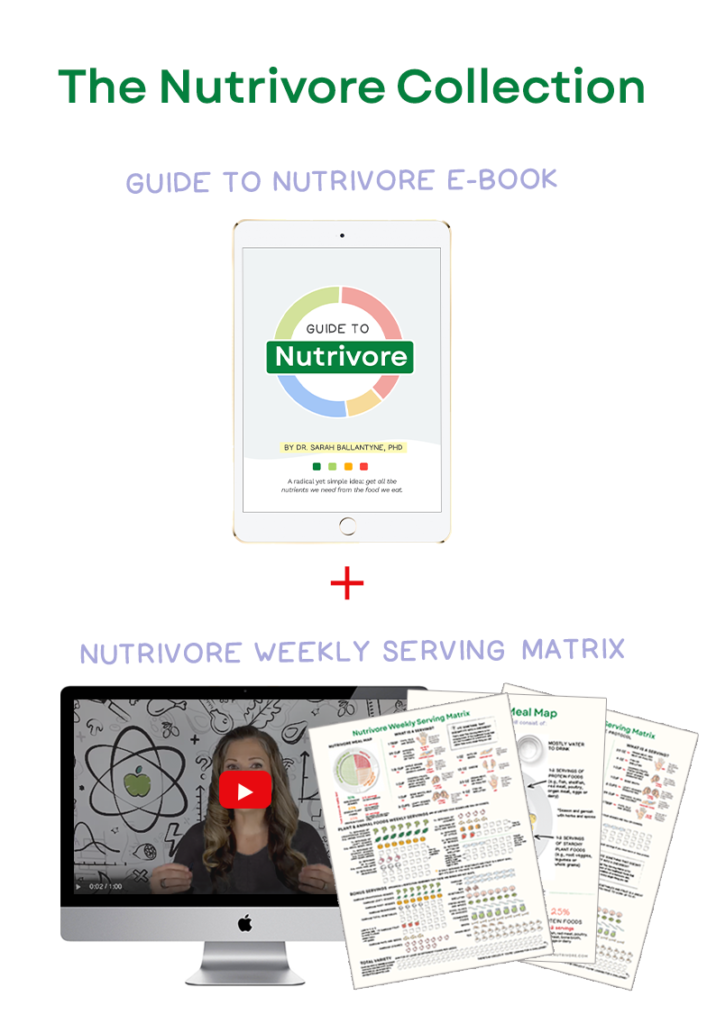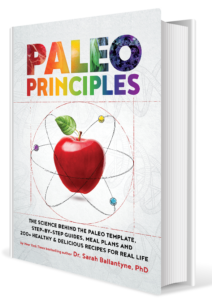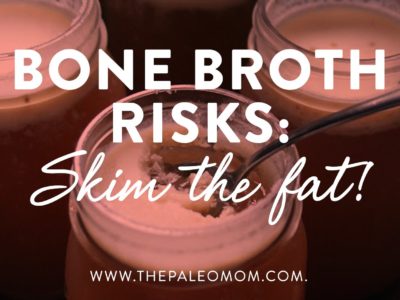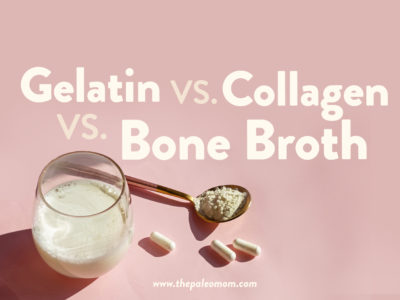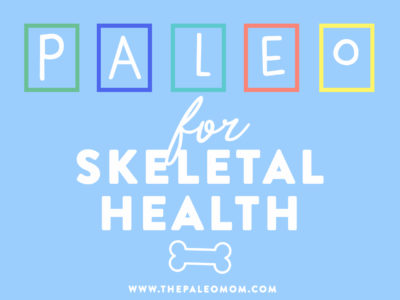The value (or lack thereof) of dairy products is one of the most fiercely debated topics within the Paleo community. Opinions vary dramatically from consumption of no dairy whatsoever, to only consuming dairy fat (such as ghee, butter, and heavy cream), to only consuming raw grass-fed dairy, to only consuming fermented dairy or aged cheeses, to including any dairy on a regular basis. All of those positions are based on varying degrees of science and speculation, with no clear-cut (and evidence-based!) guideline that could apply across the board.
Table of Contents[Hide][Show]
So, should we include dairy in our diets, or not? Let’s start with the most legitimate arguments against dairy!
Leaky Gut
Like grains and pseudo-grains, dairy contains protease inhibitors, which are molecules designed to neutralize the digestive enzymes that would normally degrade the proteins (and toxins) in food. When protease inhibitors are present in our digestive tract, it affects degradation of all proteins present at that time. When our bodies sense the need to increase protein digestion, the pancreas secretes more digestive enzymes into the small intestine.
Because some digestive enzymes are being inhibited (the proteases which break down protein) while others are not, the balance between the different digestive enzymes is thrown off. One enzyme that ends up in excessive quantities during this process is trypsin, an enzyme that is very good at destroying the connections between cells. If we have a large concentration of trypsin in our small intestine, it can weaken the connections between the enterocytes, creating a pathway for the contents of the gut to leak into our blood stream. To make matters worse, in the presence of an already leaky gut, incompletely digested proteins that cross the enterocyte layer stimulate the resident immune cells of our gut to release inflammatory cytokines and produce antibodies. The result is increased inflammation! (See What Is A Leaky Gut? (And How Can It Cause So Many Health Issues?) and How Do Grains, Legumes and Dairy Cause a Leaky Gut? Part 2: Saponins and Protease Inhibitors).
Ultimately, dairy is designed to create a leaky gut. Scientists still don’t understand all the mechanisms through which this occurs. But, it seems to be an important aspect of what dairy is designed to do: feed babies (of the same species) optimal nutrition for rapid growth. In newborn infants, a leaky gut is essential so that some components of mother’s milk can get into the blood stream, like hormones and all the antibodies that a mother makes that helps boost her child’s immune system. When we’re young, a leaky gut is actually a good thing! But, while this is essential for optimal health in babies, it becomes a problem in the adult digestive tract where there are more things present than mother’s milk, much of which we don’t want to leak into the blood stream. Drinking milk from a different species seems to exacerbate the problem since the foreign proteins can trigger a larger immune response.
Lactose Intolerance
One of the biggest reasons many people avoid or limit dairy products is lactose intolerance—the inability to fully digest lactose (the main sugar in milk). Rates of lactose intolerance vary widely based on ethnicity, ranging from 5% among Northern Europeans to over 90% of the population in some Asian and African countries. In fact, in the US alone, somewhere between 30 and 50 million people are lactose intolerant!
Lactose intolerance results from a deficiency in an enzyme called lactase, which is secreted by cells in the upper part of the small intestine and is responsible for breaking down lactose into glucose and galactose. Lactose intolerance can be inherited (involving mutations in the LCT gene, which provides instructions for making lactase), or it can develop later in life due to certain health conditions (like Crohn’s disease, celiac disease, ulcerative colitis, gastroenteritis, or stomach infections) or as a result of chemotherapy. Regardless of how it forms, lactose intolerance is pretty unpleasant: it results in symptoms like gas, bloating, stomach pain, nausea, and diarrhea in response to dairy consumption (all caused by undigested lactose in the gut!).
One of the arguments in favor of raw milk is the presence of active lactase which aids in digestion even by those with lactose intolerance and which is rendered inactive by the pasteurization process. However, it is important to recall that pasteurization was introduced in the late 1800s because serious infections–like tuberculosis, strep throat, scarlet fever, and typhoid fever–were transmitted via raw milk consumption. And in fact, the legal requirement that milk be pasteurized, introduced in 1908, is credited for preventing millions of cases of serious illness each year, nearly eradicating diseases like tuberculosis in the USA, and is viewed as one of the greatest contributions to public safety in history. While many of the potential sources of milk contamination can be mitigated, those opting for raw milk are strongly advised to thoroughly research the farming practices of their potential suppliers. Due to the risks involved with consumption of raw dairy, I can not unilaterally endorse it and believe that each person needs to carefully consider the risks and benefits in their own decisions regarding raw dairy.
Allergenic Proteins
While lactose intolerance involves reaction to milk sugar, true dairy allergies involve a reaction to various proteins in milk (including casein and whey). Epidemiological reports of cow’s milk allergy (IgE antibody reactions to cow’s milk proteins) range from between 1 and 17.5% in preschoolers, 1 and 13.5% in children ages 5 to 16 years, and 1 to 4% in adults. The prevalence of cow’s milk sensitivities (IgA and IgG antibody reactions to cow’s milk proteins) in the general population is unknown, but one study in patients with Irritable Bowel Syndrome showed that a whopping 84% of participants tested positive for IgG antibodies against milk proteins. That’s definitely excellent rationale right there for eliminating and then challenging dairy (see Reintroducing Foods after Following the Autoimmune Protocol).
Cow’s milk proteins are also known gluten cross-reactors, which means that those with gluten intolerance may produce antibodies against gluten that also recognize dairy proteins (see Gluten Cross-Reactivity: How your body can still think you’re eating gluten even after giving it up). For these people, eating dairy is essentially the same as eating gluten. Very importantly, for people with allergy, intolerance or gluten cross-reactions to dairy proteins, even the trace proteins in dairy fats (like butter and ghee) can be a problem.
Other Arguments
Within the Paleo movement (as well as in other health communities), several more tenuous arguments are also made against dairy consumption. Although they’re worth considering, these arguments aren’t generally supported by enough real-world evidence to be considered reasons to avoid dairy. They include:
- Insulin response. Milk is highly insulinogenic, meaning it causes a large spike in blood insulin levels, disproportional to the amount of sugar and protein in milk. However, the available evidence suggests that dairy-induced insulin spikes don’t lead to the development of chronic disease and obesity: as we’ll see shortly, many dairy products (and specific components of dairy products) are associated with lower risk of the chronic diseases linked with high insulin levels.
- Hormones. Milk contains active bovine (cow) hormones, which have the potential to alter our own hormone levels. For example, milk consumption (particularly dairy protein) tends to raise our blood levels of insulin-like growth factor-1 (IGF-1), which has been linked to higher risk of breast, colorectal, and prostate cancer. However, other components of dairy have been shown to be cancer-protective, and may consequently negate the potential hormone-related risk increase.
Nutrivore Weekly Serving Matrix
An easy-to-use and flexible weekly checklist
to help you maximize nutrient-density.
The Weekly Serving Matrix is very helpful! I’ve been eating along these lines but this really helps me know where to focus vs. which foods serve a more secondary role. It’s super helpful and has taken a lot of worry out of my meal planning. Thanks!
Jan
Dairy Benefits
On the “pro” side of the list, there are also some very compelling arguments for including dairy products in our diets! Studies have shown that consumption of dairy, especially full-fat dairy and fermented dairy products, can protect against metabolic syndrome (cheese, full-fat dairy, and fermented dairy), type II diabetes (fermented dairy only) and cardiovascular disease (cheese, full-fat dairy, and fermented dairy). In fact, one meta-analysis of 31 prospective cohort studies found that dairy consumption in general was associated with a 9% lower risk of stroke; calcium from dairy foods was associated with a 31% lower risk of stroke; and cheese was associated with an 18% lower risk of coronary heart disease and 13% lower risk of stroke. There is some evidence that non-homogenized dairy especially is linked to health benefits.
Grass-fed dairy, especially the fat from grass-fed dairy, is an excellent source of fat-soluble vitamins and conjugated linoleic acid, an anti-inflammatory fat that can potentially improve body composition and reduce cancer risk. Additional nutrients in dairy can also be health-protective in a number of ways, such as calcium reducing vascular resistance and blood pressure, vitamin D improving insulin sensitivity and reducing cancer risk, and potassium, magnesium, and phosphorus playing a role in blood pressure management.
Fermented dairy is an excellent source of probiotics, particularly Lactobacillus and Bifidobacterium (check out “The Health Benefits of Fermented Foods” for more on this topic!). There are also some valuable proteins in dairy, such as glutathione (very important for reducing inflammation and protecting against oxidative stress) and whey (which has been shown to have anti-tumor and immune-boosting properties in a wide variety of studies).
There is also evidence that dairy proteins are beneficial for children due to their growth-promoting effects. Traditionally, children would have received some breast milk until approximately five years of age. In our current society, most children are weaned by age one. The current scientific view is that, provided cow’s milk is not introduced too early, it is a good substitute for human milk in terms of its growth promotion. (Of course, baby-led weaning is superior for those for whom this is an accessible choice.)
To Eat or Not to Eat?
So, should we include dairy in our diets or not? The answer is entirely individual. For a healthy person with no dairy intolerance or allergy, no autoimmune diseases, and no other conditions where a leaky gut is a potential contributing factor, dairy may be perfectly fine and even beneficial (especially fermented dairy and full-fat, grass-fed dairy). For everyone else, it makes the most sense to omit dairy for the time being, and experiment with reintroducing it after at least one month of elimination in order to determine whether it’s causing symptoms (see Reintroducing Foods after Following the Autoimmune Protocol for the best way to do this). In general, dairy fats with little to no sugars or protein (ghee, and to a lesser extent butter and cream) tend to be less allergenic and most widely tolerated.
Citations
Agostoni C & Turck D. “Is cow’s milk harmful to a child’s health?” J Pediatr Gastroenterol Nutr. 2011 Dec;53(6):594-600.
Alexander DD, et al. “Dairy consumption and CVD: a systematic review and meta-analysis.” Br J Nutr. 2016 Feb 28;115(4):737-50.
Bonthuis M, et al. “Dairy consumption and patterns of mortality of Australian adults.” Eur J Clin Nutr. 2010 Jun;64(6):569-77.
Buckley, J.D., et al., “Bovine colostrum supplementation during running training increases intestinal permeability” Nutrients. 2009;1(2):224-34
Chowdhury R, et al. “Association of dietary, circulating, and supplement fatty acids with coronary risk: a systematic review and meta-analysis.” Ann Intern Med. 2014;160:398-406.
Crowe FL, et al. “The association between diet and serum concentrations of IGF-I, IGFBP-1, IGFBP-2, and IGFBP-3 in the European Prospective Investigation into Cancer and Nutrition.” Cancer Epidemiol Biomarkers Prev. 2009 May;18(5):1333-40.
Hu D, et al. “Dairy foods and risk of stroke: a meta-analysis of prospective cohort studies.” Nutr Metab Cardiovasc Dis. 2014;24:460-469.
Louie JC, et al. “Higher regular fat dairy consumption is associated with lower incidence of metabolic syndrome but not type 2 diabetes.” Nutr Metab Cardiovasc Dis. 2012 Sep 26. pii: S0939-4753(12)00193-7.
Muldowney S & Kiely M. “Vitamin D and cardiometabolic health: a review of the evidence.” Nutr Res Rev. 2011;24:1-20.
Nukumi N, et al. “Reduction of tumorigenesis and invasion of human breast cancer cells by whey acidic protein (WAP).” Cancer Lett. 2007 Jul 8;252(1):65-74. Epub 2007 Jan 9.
Rice BH. “Dairy and Cardiovascular Disease: A Review of Recent Observational Research.” Curr Nutr Rep. 2014;3(2):130-138.
Sluijs I, et al. “The amount and type of dairy product intake and incident type 2 diabetes: results from the EPIC-InterAct Study.” Am J Clin Nutr. 2012 Aug;96(2):382-90. Epub 2012 Jul 3.
Sonestedt E, et al. “Dairy products and its association with incidence of cardiovascular disease: the Malmö diet and cancer cohort.” Eur J Epidemiol. 2011 Aug;26(8):609-18.
Qin LQ, et al. “Dairy consumption and risk of cardiovascular disease: an updated meta-analysis of prospective cohort studies.” Asia Pac J Clin Nutr. 2015;24:90-100.
Warensjö E, et al. “Biomarkers of milk fat and the risk of myocardial infarction in men and women: a prospective, matched case-control study.” Am J Clin Nutr. 2010 Jul;92(1):194-202. Epub 2010 May 19.

